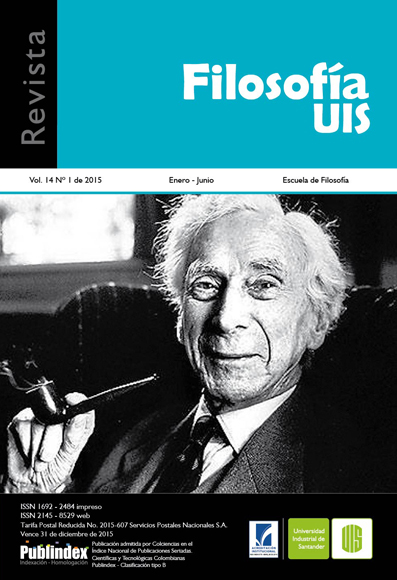Redefinition of the sense of Aleph of Borges by the aesthetic reception categories
Published 2015-06-05
Keywords
- aesthetic reception,
- background horizon,
- the expectations horizon,
- historical horizon,
- reader
How to Cite
Copyright (c) 2015 Pedro Nelson Montes Hernández

This work is licensed under a Creative Commons Attribution 4.0 International License.
Abstract
The paper introduces a critical reflection about different ways of literary study from the book and the author mentioned in the title; it aims to present a brief epistemological corpus of aesthetic reception from the Hans Robert Jauss postulates as a new method of literary criticism, which includes the reader (central element of the interpretive act) and tries to apply the categories of the reception aesthetics in the tale of “Aleph” by Jorge Luis Borges, to show that the hermeneutic exercise not only allows the redefinition of the meaning of a text, from a current time frame, but the cognitive alteration of the reader. Therefore, the reflection concludes that the meaning of a content does not dwell on the text itself but it is constructed dialogically between the author and the text with the reader, who updates and objectifies the sense of a new act of interpretation.
Downloads
References
- Borges, J. L. (1982). El Aleph. Buenos Aires: Emecé.
- Borges, J. L. (1998). El hacedor. Madrid: Alianza.
- Descartes, R. (1974). Discurso del método. Buenos Aires: Losada.
- Gadamer, H-G. (1993). Verdad y Método I: Fundamentos de una hermenéutica. Salamanca: Ediciones Sígueme.
- Habermas, J. (1985). Conciencia moral y acción comunicativa. Barcelona: Península.
- Hegel, F. (1968). Filosofía del derecho. Buenos Aires: Claridad.
- Iser, W. (1993). Prospecting: From reader-response to literaty anthropology. London: JHU Press.
- Leibniz, G. (1981). La monadología. Oviedo (España): Pentalfa ediciones Mayoral.
- Ricoeur, P. (2003). Teoría de la interpretación. Discurso y excedente de sentido. México D.F.: Siglo XXI editores.
- Vattimo, G. (1987). El fin de la modernidad: Nihilismo y hermenéutica en la cultura postmoderna. Barcelona: Gedisa.
- CIBERGRAFÍA
- Agrawal, A. (s. f.). Borges: una exploración del infinito. Recuperado de: https://www.yumpu.com/es/document/view/15522577/borges-una-exploracion-delinfinito-the-modern-word
- Bravo, V. (2000). Borges: la repetición y el infinito. Recuperado de: http://www. kalathos.com/may2000/borges_completo.htm
- Capdevila i Castelle, P. (2006). Experiencia estética y hermenéutica: un diálogo entre Enmanuel Kant y Hans-Robert Jauss. Recuperado de: http://ddd.uab.cat/pub/tesis/2006/tdx-0117107-150402/pcc1de1.pdf
- Jauss, H.R. (1975). El lector como instancia de una nueva historia de la literatura. Recuperado de: http://http://teorialiteraria1unlp.blog.com/files/2013/05/97439249-Jauss-ElLectorcomoInstancia.pdf
- Morales Piña, E. (2011). Aproximación a la estética de la recepción y a la semiótica literaria. Recuperado de: http://libroslecturaslectoresarg.blogspot.com/2011/05/aproximacion-la-estetica-de-la.html
- Pacheco Acuña, G. (2005). Cuentos de mi tía pachita desde los conceptos teóricos de reader-Response y los de Wolfgang Iser. Recuperado de: http://revistas.ucr.ac.cr/index.php/kanina/article/viewFile/4683/4497
- Piché, C. (1984). Experiencia estética y hermenéutica literaria. Recuperado de: http://www.bdigital.unal.edu.co/24588/1/21777-74579-1-PB.pdf
- Vélez Upegui, M. (2010). “Ricoeur y el concepto de texto”. Revista Co-herencia. Revista de Humanidades. Vol. 7 (12). Recuperado de: http://publicaciones.eafit. edu.co/index.php/co-herencia/article/view/17/17
